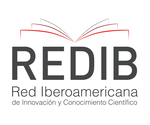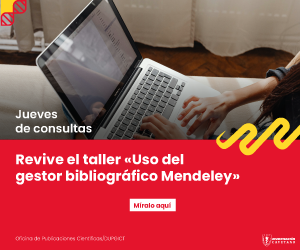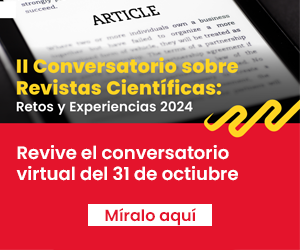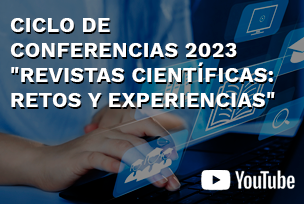Repercusión familiar y apoyo social en familias de pacientes con lesión medular
DOI:
https://doi.org/10.20453/rmh.v33i2.4243Palabras clave:
Traumatismos de la médula espinal, apoyo social, salud de la familia, conflicto familiar., family conflict.Resumen
Objetivo: Determinar si existe asociación entre la repercusión familiar y el apoyo social en familias de pacientes con lesión medular espinal. Material y métodos: Estudio observacional, descriptivo y relacional. El estudio se llevó a cabo en un instituto especializado de rehabilitación del Ministerio de Salud. La población de estudio fue 50 familias de pacientes con lesión medular, a quienes se les evaluó la repercusión familiar mediante el instrumento de repercusión familiar (IRFA) y el apoyo social mediante el cuestionario MOS de apoyo social. Resultados: El 44% de los pacientes y el 58% de los familiares tenían entre 30 y 59 años. El 34% de los cuidadores eran cónyuges del paciente, el 48% era familia de tipo nuclear y el 62% de las familias pertenecieron al nivel socioeconómico de pobreza extrema. El 78% de los pacientes tenían paraplejía y el 48% lesión tipo ASIA A. La repercusión global, fue elevada en 68% y con un sentido negativo en 94% de los casos. En el apoyo social emocional/informacional, instrumental, afectivo e interacción social positiva, se encontró una media de 27,8 ± 4,7 puntos; 15,2 ± 2,5 puntos; 11,3 ± 1,9 puntos y 12,8 ± 2,4 puntos, respectivamente. Se encontró relación entre el sexo del familiar (p=0,043), edad del paciente (p=0,013) y parentesco (p=0,014) con la repercusión familiar; sin embargo, no hubo relación entre las dimensiones del apoyo social y la repercusión familiar. Conclusiones: No hubo diferencias del apoyo social en los niveles de repercusión familiar de los pacientes con lesión medular espinal atendidos en un instituto de rehabilitación.
Descargas
Citas
World Health Organization. Spinal Cord Injury. Ginebra: World Health Organization; 2013 (Citado el 27 de abril del 2021). Disponible en: http://apps.who. int/iris/bitstream/handle/10665/94190/9789 241564663_eng.pdf;jsessionid=08FB57F29168C89 BCD2AD783272FECE8?sequence=1
Álvarez-González CR, Cardoso-Suárez T, Zamora-Pérez F, Pérez-Pérez AE, Martínez-Aching GT. Caracterización del paciente lesionado medular según deterioro neurológico y discapacidad. Rev Ecuatoriana Neurol. 2009 (Citado el 27 de abril del 2021);18(1– 2). Disponible en: http://revecuatneurol.com/ magazine_issue_article/caracterizacion-del-paciente- lesionado-medular/
Henao-Lema CP, Pérez-Parra JE. Lesiones medulares y discapacidad: revisión bibliográfica. Aquichan. 2010 (Citado el 27 de abril del 2021); 10:157– 72. Disponible en: https://www.redalyc.org/articulo. oa?id=74116245006
Herrera PM. Impacto de los acontecimientos significativos de la vida familiar en la salud de la familia. La Habana: Universidad de Ciencias Médicas de la Habana; 2010 (Citado el 27 de abril del 2021). 216 p. Disponible en: https://repositorioslatinoamericanos. uchile.cl/handle/2250/140136
Herrera PM, Gonzáles I, Soler S. Metodología para evaluar el impacto de los acontecimientos vitales de la salud familiar. Rev Cuba Med Gen Integr. 2002 (Citado el 27 de abril del 2021); 18(2):169–72. Disponible en: http://scielo.sld.cu/scielo.php? script=sci_arttext&pid=S0864-21252002000200013 &lng=es&nrm=iso&tlng=es
Reséndiz G. El abordaje familiar en el contexto de la discapacidad. Algunas consideraciones para establecer relaciones entre el personal de salud y la familia del paciente. Ens científico. 2013 (Citado el 27 de abril del 2021); 2(1):23–
Disponible en: www.medigraphic.org.mxhttp://www.medigraphic. com/ridwww.medigraphic.org.mx 7. Ekechukwu E, Ikrechero J, Ezeukwu A, Egwuonwu A, Umar L, Badaru U. Determinants of quality of life among community-dwelling persons with spinal cord injury: A path analysis. Niger J Clin Pract [Internet]. 2017 (Citado el 27 de abril del 2021); 20(2):163-169. DOI: 10.4103/1119-3077.187328
Henao CP, Pérez JE, Acosta ML, Parra SJ, Quino AC. Predicción del grado de discapacidad en adultos con lesión medular de Bogotá, usando el WHO-DAS II. Rehabilitación. 2015 (Citado el 27 de abril del 2021); 49(2):75–81. Disponible en: https://linkinghub. elsevier.com/retrieve/pii/S0048712015000079
Khazaeipour Z, Ahmadipour E, Rahimi-Movaghar V, Ahmadipour F, Vaccaro AR, Babakhani B. Association of pain, social support and socioeconomic indicators in patients with spinal cord injury in Iran. Spinal Cord [Internet]. 2017 (Citado el 27 de abril de 2021); 55(2):180–186. DOI: 10.1038/sc.2016.160
Obembe AO, Goldsmith CH, Simpson LA, Sakakibara BM, Eng JJ. Support service utilization and out-of-pocket payments for health services in a population-based sample of adults with neurological conditions. Vigo D, editor. PLoS One [Internet]. 2018 (Citado el 11 de marzo de 2019); 13(2):e0192911. DOI: 10.1371/journal.pone.0192911
Federación Nacional ASpaym. Análisis sobre la lesión medular en España. Madrid: Federación Nacional Aspaym; 2012. (Citado el 27 de abril del 2021). Disponible en: http://www.aspaym.org/pdf/ publicaciones/LM_Aspaym_Media.pdf
Londoño NH, Rogers HL, Castilla JF, et al. Validación en Colombia del cuestionario MOS de apoyo social. Int J Psychol Res. 2012 (Citado el 27 de abril del 2021); 5(1):142–50. Disponible en: https://biblat.unam. mx/es/revista/international-journal-of-psychological- research/articulo/validacion-en-colombia-del- cuestionario-mos-de-apoyo-social
Beauregard L, Guindon A, Noreau L, Lefebvre H, Boucher N. Community needs of people living with spinal cord injury and their family. Top Spinal Cord Inj Rehabil [Internet]. 2012 (Citado el 25 de marzo de 2022) 18(2):122-5. DOI: 10.1310/sci1802-122.
Bucki B, Spitz E, Baumann M. Emotional and social repercussions of stroke on patient-family caregiver dyads: Analysis of diverging attitudes and profiles of the differing dyads. PLoS One [Internet]. 2019 (Citado el 11 de marzo de 2019); 14(4): e0215425. DOI: 10.1371/journal.pone.0215425
Farajzadeh A, Akbarfahimi M, Maroufizadeh S, Miri Lavasani N. Factors Associated with Quality of Life among Caregivers of People with Spinal Cord Injury. Occup Ther Int [Internet]. 2021 (Citado el 23 de marzo de 2022); 9921710. DOI: 10.1155/2021/ 9921710.
Duarte Torres DM, Torres Bolaños YM, Moreno Fergusson ME. Body and Corporality in adolescents and young adults with spinal cord injury. Invest Educ Enferm [Internet]. 2016 (Citado el 23 de marzo de 2022); 34(1):84-93. DOI: 10.17533/udea.iee.v34n1a10. PMID: 28569977.
Zanini DS, Peixoto EM, Nakano TC. Escala de apoio social (MOS-SSS): proposta de normatização com referência nos itens. Temas em Psicol. 2018 (Citado el 27 de abril del 2021); 26(1):387– 99. Disponible en: http://www.scielo.br/ scielo.php?script=sci_arttext&pid=S2358- 18832018000100387&lng=en&nrm=iso&tlng=en
Lynch J, Cahalan R. The impact of spinal cord injury on the quality of life of primary family caregivers: a literature review. Spinal Cord [Internet]. 2017 (Citado el 23 de marzo de 2022);55(11):964-978. DOI: 10.1038/sc.2017.56
Kalyani HH, Dassanayake S, Senarath U. Effects of paraplegia on quality of life and family economy among patients with spinal cord injuries in selected hospitals of Sri Lanka. Spinal Cord [Internet]. 2015 (Citado el 23 de marzo de 2022); 53(6):446-50. DOI: 10.1038/sc.2014.183.
Khazaeipour Z, Hajiaghababaei M, Mirminachi B, Vaccaro AR, Rahimi-Movaghar V. Social support and its association with depression, gender and socioeconomic indicators in individuals with spinal cord injury in Iran. Spinal Cord [Internet]. 2017 (Citado el 5 de enero de 2021); 55(11):1039–1044. DOI: 10.1038/sc.2017.80
Jensen MP, Smith AE, Bombardier CH, Yorkston KM, Miró J, Molton IR. Social support, depression, and physical disability: Age and diagnostic group effects. Disabil Health J [Internet]. 2014 (Citado el 11 de marzo de 2019); 7(2):164–72. DOI: 10.1016/j. dhjo.2013.11.001
Descargas
Publicado
Cómo citar
Número
Sección
Licencia
Los autores ceden sus derechos a la RMH para que esta divulgue el artículo a través de los medios que disponga. Los autores mantienen el derecho a compartir, copiar, distribuir, ejecutar y comunicar públicamente su artículo, o parte de él, mencionando la publicación original en la revista.

















